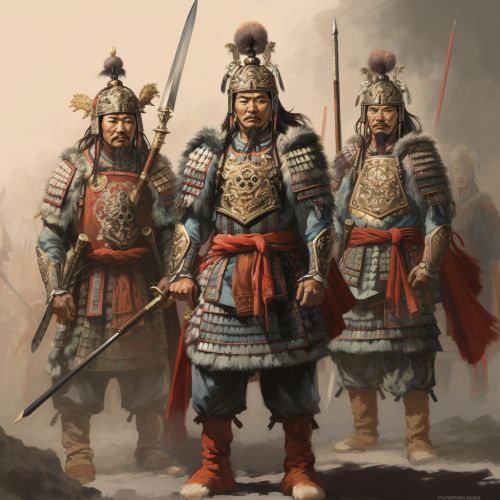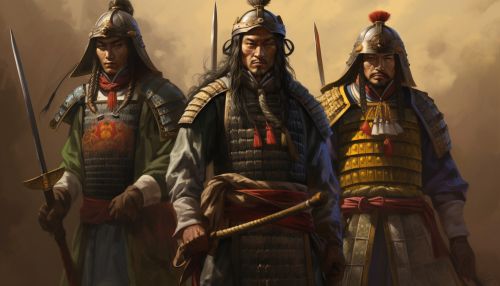Warring States period
Overview
The Warring States period was a time of intense conflict and political instability in ancient China, lasting from 475 BC to 221 BC. This period, which followed the Spring and Autumn period, saw the transformation of a multitude of small feudal states into seven major powers: Qi, Chu, Yan, Han, Zhao, Wei, and Qin. These states were constantly at war with each other, leading to the period's name.


Historical Context
The Warring States period was a continuation of the political and social changes that began during the Spring and Autumn period. The Zhou dynasty, which had ruled China since the 11th century BC, was in decline. Its authority had been undermined by the rise of powerful regional lords who ruled their territories as independent states. These lords, or 'zhuhou', had their own armies and conducted their own diplomatic relations. The Zhou king, in theory, was the overlord of these states, but in practice, his power was nominal.
The Seven Warring States
Each of the seven major states that emerged during this period had its own unique characteristics and strengths.
Qi
The state of Qi was located in the eastern part of China, near the coast. It was known for its wealth and cultural sophistication. Qi was one of the most powerful states during the early part of the Warring States period, but its influence waned over time.
Chu
Chu, located in the south, was the largest of the seven states. It was known for its military strength and its rich natural resources. Chu was a major player throughout the Warring States period.
Yan
The state of Yan was located in the north, near present-day Beijing. It was a frontier state, often threatened by nomadic tribes from the north. Yan was known for its strong military and its strategic location.
Han
Han, located in the central part of China, was one of the smaller states. Despite its size, Han was able to hold its own against the larger states, thanks to its strategic location and its alliances with other states.
Zhao
The state of Zhao was located in the northern part of China. It was known for its strong cavalry and its innovative military tactics. Zhao was a major player in the later part of the Warring States period.
Wei
Wei, located in the central part of China, was known for its strong economy and its advanced iron technology. Wei was a major player in the early part of the Warring States period.
Qin
The state of Qin, located in the west, was the most powerful of the seven states. It was known for its strong military, its efficient administration, and its legalistic philosophy. Qin eventually emerged as the victor of the Warring States period, unifying China under its rule.
Military Tactics and Technology
The Warring States period saw significant advances in military tactics and technology. The introduction of iron weapons and the use of cavalry greatly changed the nature of warfare. The states also developed sophisticated strategies for siege warfare and for the use of infantry and chariots. The crossbow was widely used during this period, giving a significant advantage to the states that mastered its use.
Philosophical Developments
This period was also a time of great intellectual ferment. It saw the development of many of the philosophical schools that would shape Chinese thought for centuries to come. These included Confucianism, Daoism, Legalism, and Mohism. The competition among these schools of thought, known as the "Hundred Schools of Thought", was a major feature of the cultural life of the Warring States period.
Unification of China
The Warring States period ended with the unification of China under the rule of the Qin dynasty. The Qin state, under the leadership of Qin Shi Huang, defeated the other six states and established a centralized, autocratic government. This marked the end of the Warring States period and the beginning of the Qin dynasty, China's first imperial dynasty.
